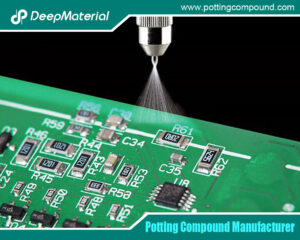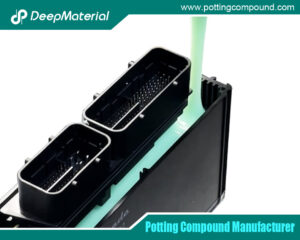
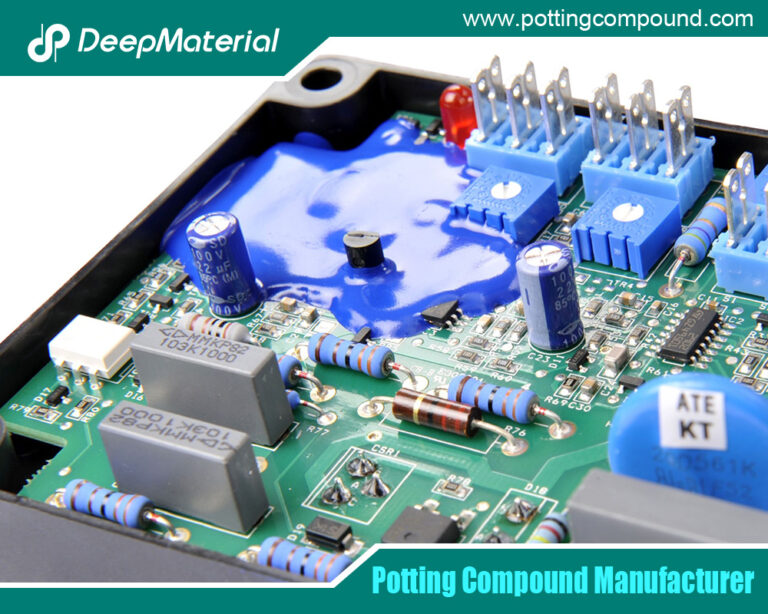
Silicone Potting Compound for Electronics: A Comprehensive Overview
- Electronic Potting Material Manufacturer
- June 28, 2024
- acrylic vs silicone conformal coating, adhesive glue manufacturer, conformal coating for electronics, conformal coating for pcb, Connector Potting Compound, deepmaterial adhesive glue, electrical potting compound, electronic potting compound, epoxy potting compound, Flexible Potting Compound, industrial adhesive suppliers, LED Potting Compound, PCB Potting Compound, polyurethane potting compound, potting compound for electronics, potting compound for pcb, potting compound vs epoxy, silicnoe epoxy adhesive glue, silicone electronic adhesive glue, Silicone Potting Compound, silicone potting compound for electronics, thermal potting compound, UV Cure Potting Compound, UV curing potting compound, uv silicone adhesive glue, waterproof potting compound
Silicone Potting Compound for Electronics: A Comprehensive Overview
The demand for reliable and robust protection for delicate components is ever-growing. As electronic devices become more sophisticated and miniaturized, safeguarding these intricate systems from environmental factors and operational stresses becomes paramount. One of the most effective solutions to this challenge is silicone potting compounds. This article delves into the significance, applications, benefits, and considerations of using silicone potting compounds in electronics.
Understanding Silicone Potting Compounds
Silicone potting compounds are a type of polymer used to encapsulate electronic components. They provide a protective barrier against various environmental factors such as moisture, dust, chemicals, and temperature fluctuations. Silicone, a material known for its excellent thermal stability and flexibility, is an ideal choice for potting applications in electronics.
Critical Properties of Silicone Potting Compounds
- Thermal Stability: Silicone potting compounds can withstand extreme temperatures ranging from -50°C to 200°C. This property is crucial for electronics that operate in harsh environments or undergo significant temperature variations.
- Electrical Insulation: Silicone is an excellent insulator that prevents short circuits and electrical failures. This makes it suitable for encapsulating components that are sensitive to electrical interference.
- Chemical Resistance: These compounds resist many chemicals, including oils, solvents, and acids, protecting electronic components from potential damage.
- Flexibility and Adhesion: Silicone remains flexible over a wide range of temperatures, accommodating the expansion and contraction of electronic components. It also adheres well to various substrates, ensuring comprehensive coverage and protection.
- Moisture Resistance: One of the critical features of silicone potting compounds is their ability to resist moisture, preventing corrosion and electrical failures caused by water ingress.
Applications in Electronics
Due to their versatile properties, Silicone potting compounds have extensive applications across various electronic domains. Some of the prominent applications include:
- Automotive Electronics: In the automotive industry, electronics are exposed to harsh conditions such as high temperatures, vibrations, and chemical exposure. Silicone potting compounds protect engine control units (ECUs), sensors, and other critical components, ensuring reliable performance and longevity.
- Consumer Electronics: Smartphones, laptops, and wearable gadgets benefit from silicone potting compounds. These compounds protect delicate circuits from moisture, dust, and mechanical stress, enhancing the durability and reliability of the devices.
- Industrial Electronics: Industrial environments often present challenging conditions for electronic systems. Silicone potting compounds are used in control systems, power supplies, and other industrial electronics to shield them from dust, moisture, and temperature fluctuations.
- Medical Devices: Electronic devices must adhere to the medical field’s stringent safety and reliability standards. Silicone potting compounds protect sensitive electronics in medical equipment, ensuring they function accurately and reliably under various conditions.
- Aerospace and Defense: Electronics used in aerospace and defense applications are subjected to extreme conditions, including high altitudes, temperature extremes, and vibrations. Silicone potting compounds provide the necessary protection to ensure the reliable operation of avionics, communication systems, and other critical electronics.
Benefits of Using Silicone Potting Compounds
The use of silicone potting compounds in electronics offers numerous advantages, making them a preferred choice for many applications:
- Enhanced Durability: By encapsulating electronic components, silicone potting compounds protect them from environmental factors, extending their lifespan and reducing the likelihood of failures.
- Improved Performance: The thermal management properties of silicone help dissipate heat generated by electronic components, preventing overheating and ensuring optimal performance.
- Electrical Insulation: The excellent dielectric properties of silicone minimize the risk of short circuits and electrical failures, enhancing the overall reliability of the electronic system.
- Mechanical Protection: Silicone potting compounds cushion, absorbing shocks and vibrations that could damage delicate components. This is particularly important in automotive, aerospace, and industrial applications.
- Chemical Protection: The resistance of silicone to various chemicals ensures that electronic components remain unaffected by exposure to oils, solvents, and other potentially damaging substances.
- Moisture Barrier: Silicone’s ability to resist moisture prevents corrosion and electrical failures caused by water ingress, making it ideal for applications in humid or wet environments.
Considerations When Using Silicone Potting Compounds
While silicone potting compounds offer numerous benefits, it is essential to consider certain factors to ensure optimal results:
- Curing Time: Silicone potting compounds require a specific curing time to achieve their complete protective properties. Depending on the formulation, this can range from a few minutes to several hours. Manufacturers must plan the production process accordingly.
- Compatibility with Substrates: Ensure the silicone potting compound is compatible with the materials used in the electronic components and substrates. Incompatibility can lead to poor adhesion and reduced effectiveness.
- Application Method: The method of applying the silicone potting compound, whether by manual dispensing or automated systems, should be chosen based on the complexity and volume of production. The proper application ensures uniform coverage and protection.
- Thermal Management: While silicone has good thermal properties, it is essential to consider the thermal conductivity of the potting compound to ensure adequate heat dissipation, especially in high-power applications.
- Viscosity and Flow Characteristics: The viscosity of the silicone potting compound affects its ability to flow and fill intricate spaces around components. Selecting the appropriate viscosity ensures complete encapsulation and protection.
Future Trends and Innovations
The field of silicone potting compounds for electronics is continuously evolving, driven by advancements in materials science and increasing demands for more reliable and robust electronic systems. Some of the future trends and innovations include:
- Enhanced Thermal Conductivity: Research is ongoing to develop silicone potting compounds with improved thermal conductivity, allowing for better heat dissipation and performance in high-power electronic applications.
- Eco-Friendly Formulations: With growing environmental concerns, there is a trend towards developing silicone potting compounds that are more environmentally friendly, including formulations with reduced volatile organic compounds (VOCs) and recyclable options.
- Improved Curing Processes: Innovations in curing technologies aim to reduce the curing time of silicone potting compounds, enhancing production efficiency and reducing costs.
- Advanced Application Techniques: The development of more sophisticated application methods, such as precision dispensing systems and automated potting equipment, ensures more consistent and reliable encapsulation of electronic components.
- Multifunctional Potting Compounds: Future silicone potting compounds may incorporate additional functionalities, such as antimicrobial properties for medical devices or electromagnetic interference (EMI) shielding for sensitive electronics.
Conclusion
Silicone potting compounds protect electronic components from environmental factors, mechanical stress, and electrical failures. Their unique properties, including thermal stability, electrical insulation, chemical resistance, and flexibility, make them indispensable in various industries, from automotive and consumer electronics to aerospace and medical devices.
As technology advances and the demand for more reliable and durable electronic systems grows, the use of silicone potting compounds will continue to expand. By understanding their properties, applications, and benefits, manufacturers can make informed decisions to enhance the performance and longevity of their electronic products. With ongoing innovations and developments, the future of silicone potting compounds in electronics looks promising, ensuring that electronic systems remain robust and reliable in an ever-evolving technological landscape.
For more about choosing the silicone potting compound for electronics, you can pay a visit to DeepMaterial at https://www.pottingcompound.com/ for more info.
Recent Posts
- What Are the Core Differences Between Different Conformal Coating Types?
- The Benefits of Conformal Coating for Electronics Products
- Conformal Coating Spray
- UV Curing Potting Compound
- The Ultimate Guide to Electrical Potting Compound and Market Application
- The Top Polyurethane Potting Compound
- Advanced Epoxy Potting Compound for Superior Electronic Protection
- Waterproof Potting Compound: A Comprehensive Guide
- Silicone Potting Compound for Electronics
- Potting Compound vs. Epoxy: A Comprehensive Comparison
Tags
Related Posts

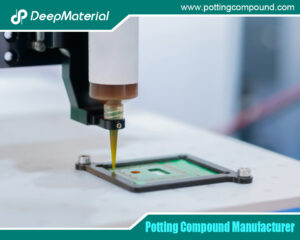
The Benefits of Conformal Coating for Electronics Products
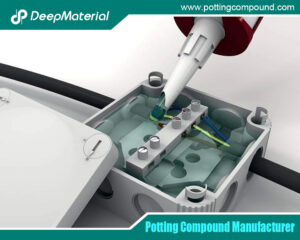
Conformal Coating Spray
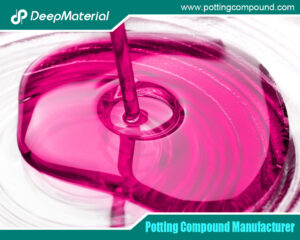
UV Curing Potting Compound
